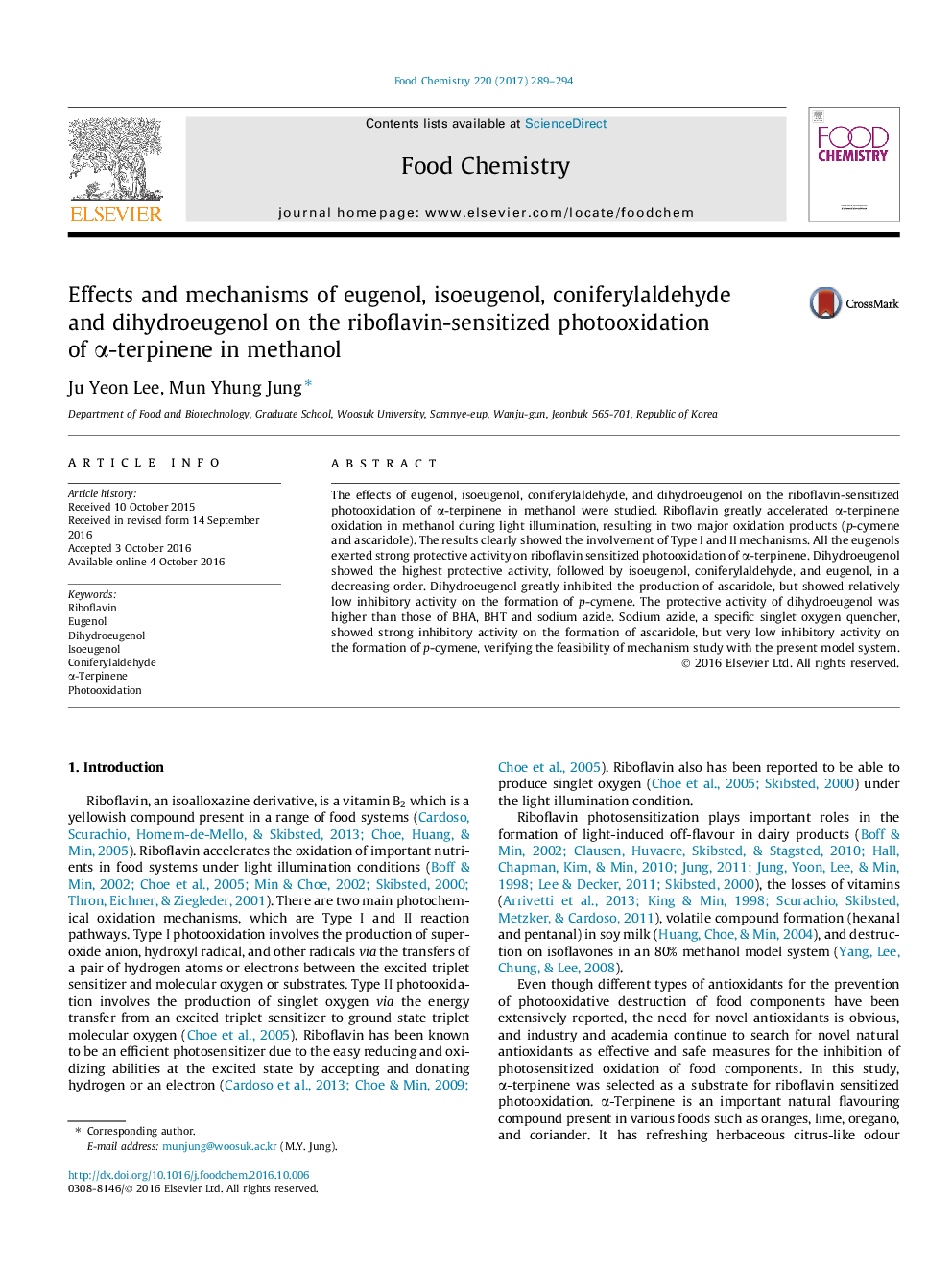| Article ID | Journal | Published Year | Pages | File Type |
|---|---|---|---|---|
| 5133974 | Food Chemistry | 2017 | 6 Pages |
â¢Riboflavin accelerated α-terpinene photooxidation via both Type I and II pathways.â¢Two major oxidation products were p-cymene and ascaridole.â¢Dihydroeugenol exerted strong protective activity against α-terpinene oxidation.â¢Dihydroeugenol showed higher protective activity than BHA, BHT and sodium azide.
The effects of eugenol, isoeugenol, coniferylaldehyde, and dihydroeugenol on the riboflavin-sensitized photooxidation of α-terpinene in methanol were studied. Riboflavin greatly accelerated α-terpinene oxidation in methanol during light illumination, resulting in two major oxidation products (p-cymene and ascaridole). The results clearly showed the involvement of Type I and II mechanisms. All the eugenols exerted strong protective activity on riboflavin sensitized photooxidation of α-terpinene. Dihydroeugenol showed the highest protective activity, followed by isoeugenol, coniferylaldehyde, and eugenol, in a decreasing order. Dihydroeugenol greatly inhibited the production of ascaridole, but showed relatively low inhibitory activity on the formation of p-cymene. The protective activity of dihydroeugenol was higher than those of BHA, BHT and sodium azide. Sodium azide, a specific singlet oxygen quencher, showed strong inhibitory activity on the formation of ascaridole, but very low inhibitory activity on the formation of p-cymene, verifying the feasibility of mechanism study with the present model system.
